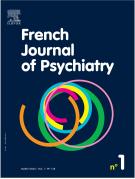Maladie d’Alzheimer chez les personnes porteuses de Trisomie 21, un tournant dans la prise en charge - 29/05/20

Résumé |
Life expectancy is increasing in the general population, and persons with Down syndrome (DS) are no exception. However this comes with an increased probability of having early Alzheimer’s disease, (AD) due to chromosom 21 triplication. Indeed, adult brains of persons with DS almost always showed AD pathology after 40 years old (Mann 1988) and recent imaging techniques with PET-amyloid scans have confirmed these findings (Landt, D’Abrera et al. 2011).
Several studies have reported incresased prevalence of AD with age, summarized in a review par Strydom et al (Strydom, Shooshtari et al. 2010). In one of the largest study to date, Coppus et al reported in 506 DS persons a global AD prevalence of 16.8%, doubling every five years, and ranging from 8.9% between 45-49 years old to 32.1% between 55-59 years old. Prevalence tended to decrease thereafter, due to high mortality in those patients.
Diagnosis remains a challenge in this population, whose baseline cognition is not well documented and may be highly variable. Comorbidities such as depression, and epilepsie are further confounding factors.
There are no standardized scales for evaluating cognition in those patients, although many have been designed for this purpose. Folstein’s MMSE is not appropriate for many patients (Deb and Braganza 1999), adaptation of CAMDEX for DS is not available in French (Nieuwenhuis-Mark 2009), or scales are too complex (Beciani, Vetro et al. 2011).
Functional decline is documented by familial or professional caregivers, as well as behavioral and mood changes. Standardized questionnaires exist, such as “Dementia Questionnaire for Persons with Mental Retardation” (DMR) or “Dementia Scale for Down Syndrome”, in English language only (Strydom and Hassiotis 2003). In 2013, a French translation of the DSQIID has emerged as a potentially useful tool to evaluate both cognition, function and behavior changes that might herald dementia (from the American National Task Group on Intellectual Disabilities and Dementia Practices). This scale show promises, especially since function and behavior changes are often detected before changes in cognition, or may be early signs of dementia by themselves.
The dementia work up for those patients should be the same as any dementia work-up: check all potentially reversible causes of decline, and assessment of decline in cogniton, function and behavior, as well as biology (including biomarkers) and imaging. Psychotropic iatrogeny should be ruled out.
In Bordeaux, we are referred those patients since 1998, thanks to a partnership with ADAPEI (a French National association of families caring for a person with disability) We rapidly came to use a short version of the Severe Impairment Battery, adapted with the main author of the scale’s French translation (Hugonot Diener, Verny et al. 2003). The scale many advantages: short passation, very well accepted by persons with DS, no ceiling or floor effects. We are currently studying the SIB score decline as a predictor of dementia. A diagnosis of AD in persons with DS has huge implications for care, both for families and professional caregivers, who must learn to adapt their demands and behaviors. Prognosis is poor and disease course is fast. The AD DS person often has to change facility, the previous one being unable, or unstaffed, to cope with the person’s new situation. Nursing home are not prepared either for such young people with dementia. In France, only few facilities are available to take care of those patients.
Many questions remains: are there dementias other than AD ? Should we use CSF biomarkers, and should we try antiamyloïd treatments?
Le texte complet de cet article est disponible en PDF.Keywords : Down syndrome, Dementia, Alzheimer’s disease, Severe Impairment Battery
Vol 1 - N° S
P. S73-S74 - novembre 2018 Retour au numéroBienvenue sur EM-consulte, la référence des professionnels de santé.
L’accès au texte intégral de cet article nécessite un abonnement.
Déjà abonné à cette revue ?

